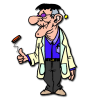I was doing a test so I could help someone else.
What happened was I was checking how to get into the system recovery and clicked the wrong button, the "next" and boom, there it went saving user settings. I panicked and since nothing else got a response, I hit the power off button. Big mistake. Now, when trying to boot, I get the Hal.dll message.
This unit, a HP laptop with amd athalon, was running XP media edition. I only have an XP Home disc but the laptop did boot up using it. I went ahead and did an install in a new folder. The new install is working and all files and folders from previous windows are intact except the system32 folder is missing. I was wondering if it would work or be safe to copy the system32 folder from the new windows to the old one?
Also, I cannot access my documents from the existing OS. I at least need to be able to copy important data from there before I do much more. The Home version is in Fat32 and the Media is ntfs. Is that going to be the problem, and if so can I just change the Fat to ntfs and change the file permissions? I am stumped.
















 Sign In
Sign In Create Account
Create Account

